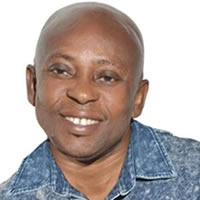Introduction
The District has a total population of 102,423 of which 52.9% are males and 47.1% are females. The sex ratio is 112.3 males per 100 females. The district is predominantly a rural one with 86.1 percent of the population living in the rural areas and 13.9 percent living in the urban areas.
Majority of the district population is between 0-9 years with 0-4 years constituting the highest proportion (17%). The district has an age dependency ratio of 91.
The total fertility rate for the district is 4.2 and is the third highest in the region. The GFR in the district is 123.2. The crude birth rate is 27.8 per 1000.
The crude death rate for the district is 4.4 deaths per 1,000 persons. There were 21,519 total deaths in households constituting 2.1 percent of the total deaths in the District.
Population size, composition and age sex structures are critical in understanding the fertility, mortality and migration dynamics of any country. Population composition is the description of a population according to characteristics such as, age, sex, marital status, ethnicity, education and occupation (2010 PHC National Analytical Report).
This chapter provides information and the characteristics of population of Kwahu Afram Plains North from the 2010 population and housing census. It analyzes the population size and distribution in the rural and urban areas of Kwahu Afram Plains North, age and sex structure, dependency ratio, migration level, fertility and mortality rate in the area.
Population Size and Distribution presents information on distribution of population for both sexes (male and female) and by their locality of residence (urban, rural) and sex ratio. The total population of the district is 102,423. Out of this, 54,183 (52.9%) are males and 48,240 (47.1%) are females.
Comparing the rural and urban population distribution, 86.1 percent of the district’s population live in the rural areas and 13.9 percent live in the urban areas. The sex ratio, usually expressed as the number of males for every 100 females is 112.3 for the district, which means for every 100 females there are 112 males.
Population
The 2010 Census was a “de facto” count and each person present in Ghana, irrespective of nationality, was enumerated at the place where he/she spent the midnight of 26th September 2010. The major soil group in the district is the Swedru-Nsaba-Offin Compound. Dominating this soil group is the Swedru series which are mainly red silty, well drained, deep gravel-free silty loams and silts-clay loams.
The Nsaba series are yellowish red silts clay loam, moderately well drained, very shallow and rocky. The soils are suitable for the cultivation of both food crops (cassava, plantain, yam, cocoyam, maize) and cash crops (cashew, oil palm, citrus,) which are grown in the district. The land in this area is susceptible to wind erosion if laid bare of vegetation.
Date Created : 11/26/2017 12:39:51 AM






 facebook
facebook X (twitter)
X (twitter) Youtube
Youtube +233 593 831 280
+233 593 831 280 0800 430 430
0800 430 430 GPS: GE-231-4383
GPS: GE-231-4383 info@ghanadistricts.com
info@ghanadistricts.com Box GP1044, Accra, Ghana
Box GP1044, Accra, Ghana